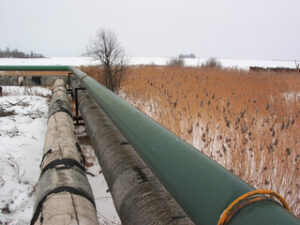Large transmission lines transport gas thousands of miles and are akin to interstate highways for cars. Each section of the line carries a pressure between two and one and a half pounds per square inch, depending on the location. Although pipelines are designed to withstand much higher pressure, in populated areas, they typically operate at less than half of their design pressure. The pressures that may occur in a pipeline are controlled by the operators at a central control center.
While many transmission pipelines are designed to withstand much higher pressure than they are needed to carry gas, many don’t operate at more than half of their designated pressure limit. In fact, many transmission pipelines are looped together to maximize their capacity. In some places, redundancy is required during times of peak demand. In other areas, a single pipeline can transport a variety of products. But how can a pipeline determine how much capacity it has? Read on to learn more.
Most homeowners rely on natural gas or propane. They use the lines for stoves in the kitchen, water heaters and dryers, and even decorative fireplaces. But despite the safety risks, gas lines can be dangerous. If you smell gas, get help right away. Even if there is no visible leakage, it could cause a fire. If you notice a leak, contact a licensed professional. If the leak isn’t severe, gas may damage the home and can even kill you.
Natural gas pipelines are composed of carbon steel tubes that are pressured from one end to the other. These pipelines range in diameter from two to sixty inches or 51 to 1,524 millimeters. Most natural gas pipelines are odorless, but some are odorous when mixed with mercaptan.
Natural gas pipelines use two main types, gathering lines and transmission lines. Gathering lines transport gas from production facilities to transmission lines. They are generally narrow, two to eight inches wide, and a few inches thick. Transmission pipelines utilize field compressors, turbines, and internal combustion engines to generate pressure. The latter type of pipeline is powered by a small portion of the gas it transports. But both types have similar functions and must be inspected regularly to maintain their safety.
Unsteady nonisothermal gas flow in transmission pipelines can be modeled using a one-dimensional approach. The problem of pipe flow is characterized by a series of nonlinear equations that express the mass, momentum, and energy conservation laws. The formulations of these equations are often known as steady-state models. These mathematical models are useful for designing and estimating gas pipelines. They can also be used to evaluate flow and line pack.
Pipelines are the primary source of natural gas, but they can fail to perform adequately. Faulty pipes can leak natural gas, which is flammable and can explode. An example of this was the train disaster, which killed 575 people and forced dozens of homes to evacuate. A similar situation occurred in a pipeline explosion that killed eight people and left six missing. That explosion exposed shoddy construction practices and inadequate inspections.
There are two basic types of gas piping. PVC pipes are durable and corrosion-resistant. They are also economical but can be susceptible to damage from underground debris and tree roots. Alternatively, black iron pipes are the most common type. Black iron gas pipes are flexible but can crack over time. If you have a long-term need for piping, consider hiring a professional to do the work. There are other types of gas piping, and each one offers unique advantages and disadvantages.
Environmental constraints, political issues, and social conditions all play a role in pipeline operations. Regulatory requirements may dictate minimum staffing levels, facilities, and technology needed to ensure safety. For example, the government may require pipeline operators to be able to detect up to eight percent of the maximum flow within fifteen minutes. This level of accuracy is required, and operators should expect high location accuracy. In the event of an emergency, it is essential to respond quickly and effectively.
A pipeline is made up of several interconnected small-diameter pipelines, which transport gas from the producer to the end consumer. Pipelines at terminals also distribute products to storage tanks. Pipeline construction projects include civil engineering work to lay pipelines, pump/compressor stations, and installation of field devices. A potential customer can sign up for capacity rights to receive natural gas, such as gas pipelines if the demand is high.
